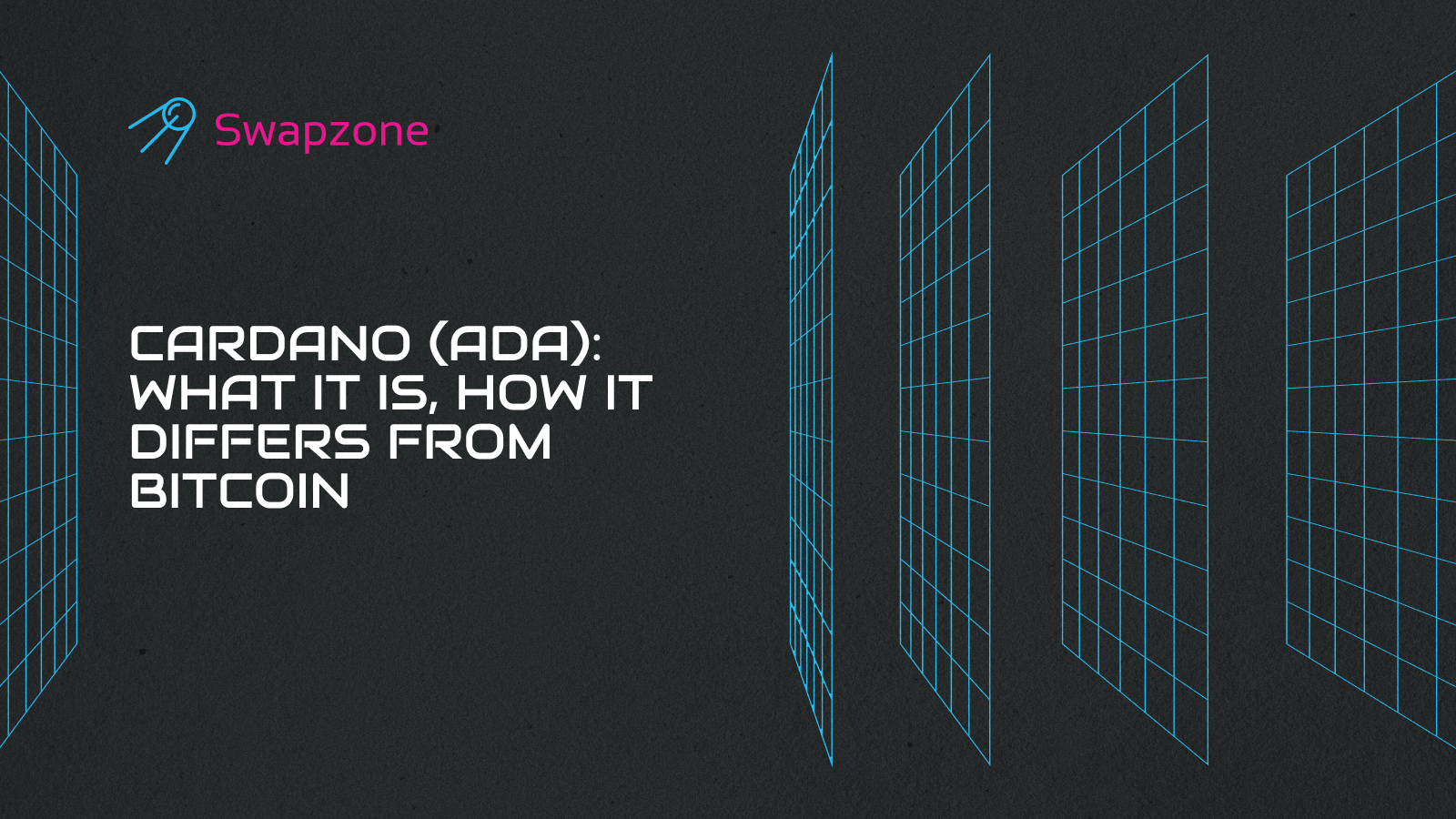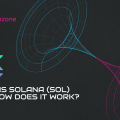ADA is a digital currency associated with the Cardano blockchain and is slowly but steadily growing in popularity in the sphere of distributed systems. This platform, which is built for decentralized applications and smart contracts, provides distinctive solutions for security, scalability, and sustainability. Cardano is based on scientific research and has no high risks, so along with being one of the youngest, Cardano is considered one of the most reliable and unique cryptocurrencies. In this review, we will consider what Cardano is, how it functions, the benefits it offers and its shortcomings, and how it stands compared to Bitcoin.
What is Cardano (ADA)?
Cardano is a third-generation blockchain that can do more than just financial transactions, unlike the previous types of blockchains such as first and second generations. Cardano is not like most other cryptocurrencies because it rests on the strategy of scientific discovery and research.
Cardano’s primary token that circulates in its ecosystem is called ADA. It is employed for operations involving the transfer of value within the network and voting in the company’s decision-making process. Substantial with Cardano is the Proof of Stake (PoS) algorithm on which its success is built, which is significantly less energy-intensive compared to Proof of Work (PoW) for such cryptocurrencies as Bitcoin.
Cardano works on a two-tier model that is in seamless harmony with each other. The first layer is called the Cardano Settlement Layer, or CSL, which deals with the ADA transactions, whereas, the second layer is known as the Cardano Computation Layer, or CCL, which is a layer that supports the smart contracts and the decentralized applications. This structure makes it easier to build a large network and makes the network more secure.
History of Cardano (ADA)
As a starting point, the structure of the project was initially characterized by original concepts in the field of development and the identification of priorities using scientific data. This led to the development of a platform that is known to boast of very high and secure reliability.
Early Development Stages
Cardano or ADA started its journey in 2015 with Input Output Hong Kong (IOHK), created by Charles Hoskinson, one of the Ethereum co-founders. As for the first stage, the development team was primarily concerned with the platform itself, building its foundation. The platform’s aspects went through numerous studies in cryptography, game theory, and computer sciences to make all the work completed as scientific as possible. Charles Hoskinson and his team, who worked on this project, closely cooperated with various scholarly institutions, such as the University of Edinburgh and the Tokyo Institute of Technology, which helped bring scientific advancements into the project.
Official Launch
Cardano was launched fully in September 2017. This stage was given the name of Byron in honor of the great poet-Boyar Lord Byron. This component of Byron, the primary Cardano network, was created to enable users to carry out transactions through ADA coins. The platform attracted attention in short order because of the scientific approach to future delivery and the talk of high security and scalability.
Early Challenges and Updates
Indeed, before the middle of the twentieth century, Cardano experienced many problems and opportunities. When it comes to the primary issues encountered, there were issues related to network stability, the need to enhance its throughput, and the necessity to also enhance the user experience. The development team was truly engaged in addressing these issues as the platform continued to be refined and optimized.
One of the major updates that was implemented was the release of Shelley in 2020. This update was designed to decentralize the network further and offer participants the ability to validate transactions. As an integral part of Shelley, the Proof of Stake (PoS) algorithm was introduced, which enhanced the energy efficiency of the network and introduced the concept of staking, through which users can earn rewards for contributing to the functionality of the network.
Introduction of Smart Contracts
The next meaningful period in the Cardano development was the Goguen update, which was in honor of the American mathematician Joseph Goguen. This update was carried out in 2021, enabling the Cardano platform to implement support for smart contracts. New to this environment, developers could now build and deploy dApps on Cardano, which added even more capabilities to the platform.
Further Development
Since its inception, Cardano has been growing and advancing. The Basho update was released in 2022 as the attempt to increase the scalability and compatibility of the network. This update contained features for connecting various blockchain networks and enhancing their integration.
Among them, the most eagerly awaited is Voltaire, which is to be released in the coming years. This update will focus on the implementation of the governance system enabling people to vote for changes in the platform’s future evolution and become a part of Cardano.
Achievements and Successes
Cardano has been very successful all through the years. It has grown to become one of the biggest and most famous cryptocurrency projects in the world, with many developers and users. The successes of Cardano include cooperation with the government and commercial companies, contribution to international projects in using blockchain technologies, and promoting science.
Purpose of Cardano (ADA)
Rating of Popularity and its Increase
Cardano (ADA) is slowly but surely establishing itself as a popular cryptocurrency because of the approach to its construction and scientific perspective. Cardano is unique from other cryptocurrencies since it is backed by science and proper means, hence renders it reliable and sustainable. On the graph provided below, it demonstrates that the interest in the platform has grown gradually after the platform was created in the year 2017.
Popularity (in millions of users):
Cardano continues to garner more attention owing to its capability to tackle challenges that may be experienced by other blockchain systems. Consequently, the number of users and investors in this platform has grown with the intention of utilizing the various innovative solutions given by the platform.
Profitability Analysis
Nevertheless, when evaluating an investment in ADA, one should assess the increase in the price of the currency and the possibility of directly participating in the management of the platform. The main indicator of this will be the further development of the network. Unlike other cryptocurrencies, the Cardano has regular and accurately predictable passive income due to the use of the Proof of Stake (PoS). This algorithm compensates participants in the network for their service in maintaining and growing the network, making ADA investments ideal for the long term.
Advantages of Cardano (ADA)
- Energy Efficiency: Another benefit of adopting Cardano is that it has adopted the Proof of Stake algorithm, which is way more efficient than proof of work algorithms used in Bitcoin and many other coins. This makes Cardano a more environment-friendly option.
- Scalability: Cardano employs a two-tier structure where the transaction processing and smart contracting tiers are two different tiers. This in a way enables the network to handle an increased number of transactions in a second and run intricate smart contracts at one time without straining the system.
- Security: The scientific approach and adherence to such rigorous schemes guarantee a high degree of security for the further Cardano network. The dedicated development team works together with other academic institutions and shares the findings in the scientific literature, thus ensuring that the security system is continually refined and upgraded.
- Flexibility: For writing smart contracts, Cardano is a more flexible platform because supports multiple programming languages. it also enables the development of several dApps associated with Cardano.
- Transparency: Trust and transparency are considered due to the open availability of all the project documentation and codes. The Cardano team always prepares reports about their activity and potential further activities, so people who invest and use the Cardano platform always know every change and addition.
Disadvantages of Cardano (ADA)
In general, all listed advantages put Cardano (ADA) among the most perspective cryptocurrencies currently available on the market, able to offer a stable and safe environment for DApp and smart-contracts deployment. At the same time, Cardano has certain prospects that should also be taken into consideration when investing.
- Relative Newness: Despite Cardano being a relatively new digital currency, it has not been for a long time in the market and thus has not been through the test of time.
- Competition: Among the other blockchain platforms that share similar characteristics and capabilities, some may pose a genuine threat to Cardano.
- Technical Complexity: For developers and users who are not privy to the usage of blockchain technologies hint can be a little steep to master.
Cardano (ADA) and Bitcoin
Comparison
Despite the similarities, Cardano and Bitcoin are two different digital assets with their strengths and benefits. Now let’s look at the main distinctions between these cryptocurrencies.
- Consensus Algorithm: Bitcoin employs the Proof of Work (PoW) algorithm for identifying valid transactions as well as generating new blocks. This process is not as energy efficient as the previous process since it uses a lot of electricity and certain equipment.
However, Cardano relies on the Proof of Stake (PoS) algorithm. In PoS, the validators are selected depending on the number of coins they own and are ready to “stake.” It greatly decreases power consumption and doesn’t need costly devices, making Cardano more eco-friendly and energy-saving.
- Scalability: Bitcoin has some scalability issues owing to its layer one system, where all the operations and transactions occur on a single blockchain. This results in slow transactions and extremely high charges when the network is congested.
The Cardano protocol has a two-tier model with the Cardano Settlement Layer (CSL) and Cardano Computation Layer (CCL). This structure also enables decentralizing transaction processing and smart contract execution that overall improves the network’s efficiency and its capability of rendering more complex operations.
- Security: Bitcoin, which is the first cryptocurrency, has a relatively high degree of security, both due to decentralization and the use of computing resources for this purpose. However, its security also depends on the fact that it is backed up by a pool of many miners who support the network.
The approach used and adopted in creating Cardano makes the network secure and reliable. Every platform component and algorithm is tested for security and assurance against threats of subsequent attacks and exploits.
- Rich Input Output: Bitcoin, however, has a very limited number of uses and applications, and it primarily works in the financial context. While applications such as the Lightning Network extend Bitcoin’s use cases, the functions offered are not as versatile as smart contracts on Cardano.
Cardano is also not rigid in working with smart contracts; it supports multiple programming languages. This makes it possible to combine Cardano with various different applications, often referred to as dApps.
Bitcoin refers to the first cryptocurrency, and it is widely recognized and used by many users as well as investors. However, due to being the first, Bitcoin provided the framework and generated immeasurable interest in cryptocurrencies and the underlying blockchain. This, in turn, helped gain a high level of confidence from investors and requests from various exchanges, wallets, and services where Bitcoin is accepted.
Final Thoughts
ADA is a rather progressive cryptocurrency with more performance benefits than its competitors due to its scientific approach and architecture. However, there are certain disadvantages and risks related to this mode of communication, but it also offers a vast opportunity for further development. Opportunities related to modern blockchain solutions could attract long-term investment in Cardano for investors.
Warnings
Crypto investing was never void of the specific risks it entails. There are always risks associated with fluctuating market prices, future changes in the regulatory framework that governs cryptocurrencies, and the occurrence of technical flaws that may significantly affect the value of a particular cryptocurrency. Hence, anyone intending to invest should always conduct research on the market and seek the services of a financial consultant.


